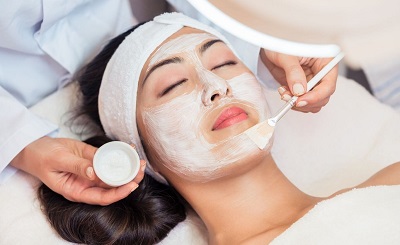
Chemical peels in Abu Dhabi have become increasingly popular in the realm of skincare, offering a promising solution for individuals seeking to enhance their natural beauty. These treatments, backed by scientific principles, delve into the depths of the skin to unveil a radiant and rejuvenated complexion.
Introduction to Chemical Peels
Chemical peels are cosmetic treatments designed to improve the appearance and texture of the skin. They involve the application of a chemical solution to the skin, which causes exfoliation and peeling. This process stimulates the regeneration of new skin cells, resulting in a smoother, more youthful complexion.
Dating back to ancient civilizations, the concept of chemical peeling can be traced to the use of natural acids and substances for skincare purposes. However, modern chemical peels have evolved significantly, with refined formulas and advanced techniques ensuring safety and efficacy.
How Chemical Peels Work
To understand how chemical peels work, it’s essential to grasp the structure of the skin. The skin consists of three primary layers: the epidermis, the dermis, and the subcutaneous tissue. Chemical peels target the epidermis and sometimes the upper layers of the dermis.
The mechanism of action varies depending on the type of chemical peel used. Superficial peels typically contain mild acids, such as alpha hydroxy acids (AHAs) or beta hydroxy acids (BHAs), which gently exfoliate the outer layer of the skin. Medium and deep peels penetrate deeper into the skin, targeting specific concerns like wrinkles, scars, and pigmentation.
Types of Chemical Peels
Chemical peels are categorized based on their depth of penetration and the strength of the chemical solution. Superficial peels are the mildest and often require minimal downtime, making them suitable for individuals with busy lifestyles. Medium peels offer more significant results, while deep peels provide the most dramatic transformation but require longer recovery periods.
Benefits of Chemical Peels
The benefits of chemical peels extend beyond aesthetic enhancements. By promoting cell turnover and collagen production, chemical peels can:
- Improve skin texture and tone
- Minimize the appearance of acne and acne scars
- Reduce fine lines and wrinkles
- Fade hyperpigmentation and sun damage
Preparing for a Chemical Peel
Before undergoing a chemical peel, it’s crucial to consult with a dermatologist or skincare professional to determine the most suitable treatment plan. Preparing the skin with a tailored skincare regimen can optimize the results and minimize the risk of adverse reactions.
What to Expect During a Chemical Peel
During the procedure, the skin will be thoroughly cleansed, and the chemical solution will be applied evenly across the treatment area. Depending on the type of peel, you may experience a tingling or burning sensation, which subsides shortly after the solution is neutralized.
Aftercare and Recovery
Following a chemical peel, it’s essential to adhere to a post-peel skincare regimen prescribed by your provider. This typically involves gentle cleansing, moisturizing, and sun protection to support the skin’s healing process and maintain optimal results.
Long-Term Results and Maintenance
The longevity of results from chemical peels varies depending on factors such as the depth of the peel, the condition of the skin, and individual lifestyle habits. To sustain the benefits of treatment, periodic maintenance peels may be recommended.
Who Can Benefit from Chemical Peels?
Chemical peels are suitable for a wide range of skin types and concerns, including acne, aging, hyperpigmentation, and sun damage. However, certain skin conditions may contraindicate treatment, so it’s essential to undergo a thorough evaluation before proceeding.
Risks and Side Effects
While chemical peels are generally safe when performed by trained professionals, they carry potential risks, such as redness, swelling, and sensitivity. Rare complications include infection, scarring, and changes in skin pigmentation.
Alternatives to Chemical Peels
For those seeking alternatives to chemical peels, various skincare treatments are available, including microdermabrasion, laser resurfacing, and dermal fillers. Each option offers unique benefits and considerations based on individual needs and preferences.
Cost Considerations
The cost of chemical peels can vary depending on factors such as the type of peel, the provider’s expertise, and the geographic location. While initial expenses may seem daunting, many individuals find value in the long-term improvements to their skin’s health and appearance.
Choosing a Qualified Practitioner
Selecting a qualified and experienced practitioner is paramount to achieving safe and satisfactory results with chemical peels. Researching credentials, reading reviews, and scheduling consultations can help ensure a positive experience and optimal outcomes.
Real-Life Experiences: Testimonials and Case Studies
Real-life testimonials and case studies provide valuable insights into the potential benefits and outcomes of chemical peels. Before and after photos offer visual evidence of the transformative effects, inspiring confidence in those considering treatment.
Conclusion: Embracing Your True Beauty Through Chemical Peels
In conclusion, chemical peels offer a scientifically proven method for unlocking your true beauty and revealing a radiant complexion. By understanding the science behind chemical peels and consulting with a qualified professional, you can embark on a journey to rejuvenated skin and newfound confidence.




